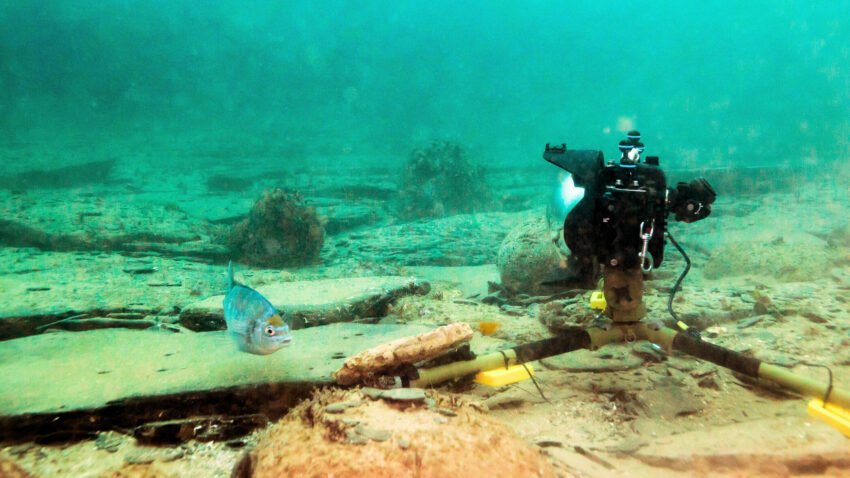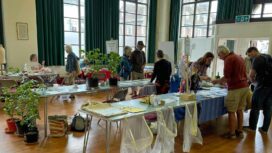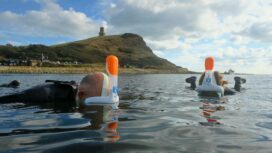In spring, a huge transformation is taking place on the seabeds of Swanage Bay and along the Jurassic Coast – a struggle to raise a new generation which few people are aware of.
Underwater cameras have allowed a rare glimpse into a secret world where male black bream fish – shy, but doggedly determined – are biologically tasked with preparing a nesting ground, attracting a mate and then protecting thousands of eggs from predators.

A male black bream clears a rock away from his nesting site
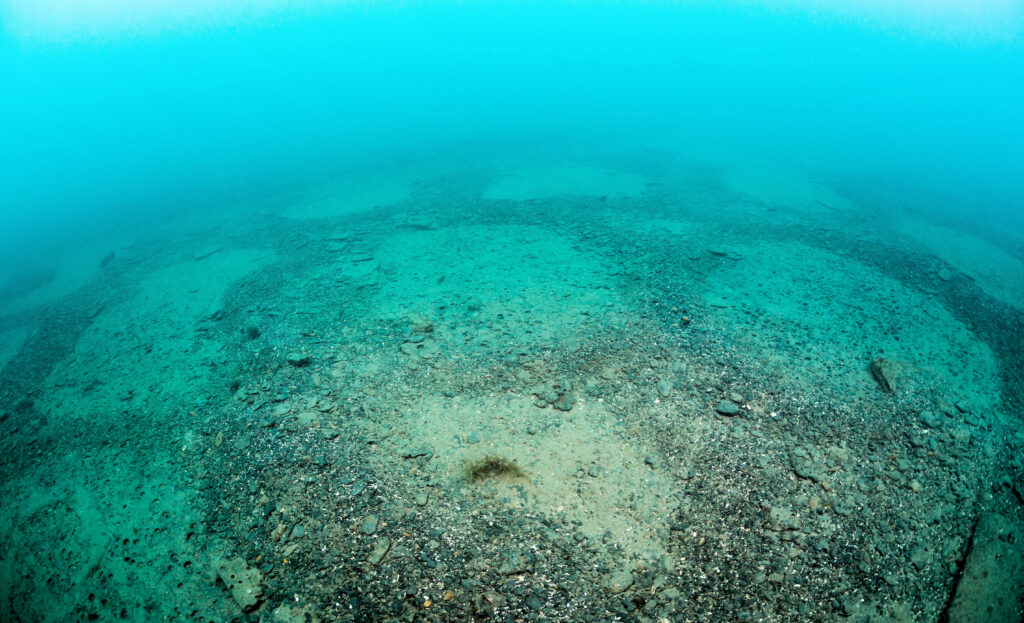
Nests can be so dense that the seabed appears like a moonscape of craters
Seabed turned into moonscape of craters
Marine biologist Matt Doggett and diving friends Sheilah and Martin Oppenshaw became intrigued by the little known fish a decade ago and have been filming their behaviour with tiny waterproof cameras placed between Kimmeridge and Swanage.
Their studies have earned them plaudits from conservation groups and anglers, as well as a visit to Buckingham Palace to collect an award from the late Prince Philip, the Duke of Edinburgh.
Each spring as the water warms up, black bream migrate to Dorset shores in their thousands and transform the seabed into a moonscape of craters, some over two metres wide as they construct their nests.
Matt Doggett, who initially managed to capture some video of a male bream on a nest in Poole Harbour, said that the project was at first driven by pure nosiness, to get to the bottom of the mystery of their breeding behaviours.

Searching for bream nests along Dorset’s stunning Jurassic Coast
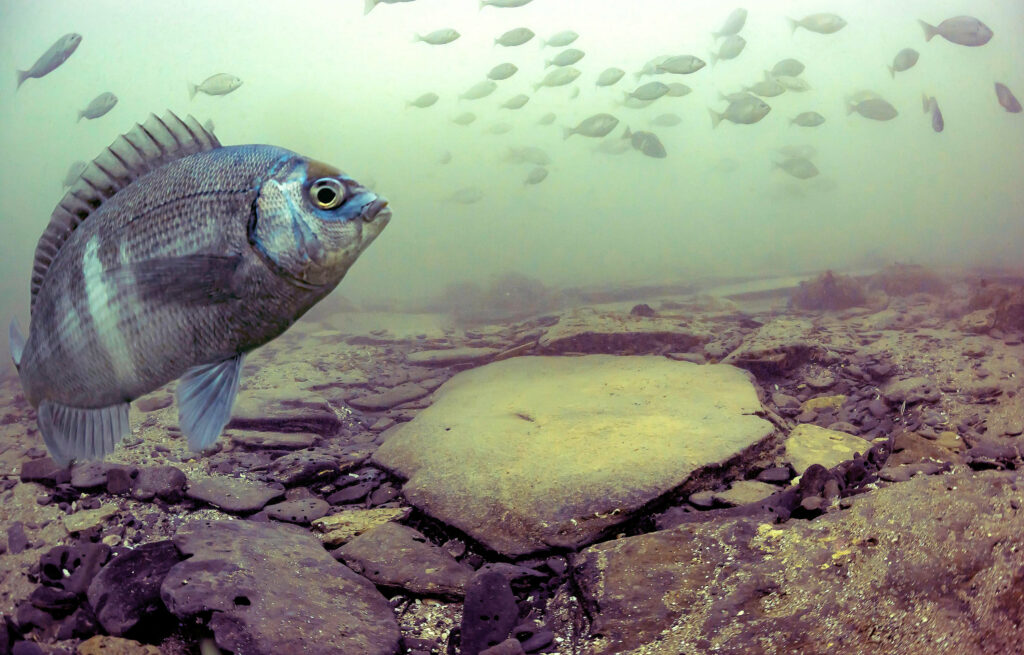
A male black bream in front of his nest while females school overhead
“No one had ever filmed this before”
Matt said:
“You tend to see the nests, not the fish, because they are very nervous and swim off as soon as they get a sight of divers.
“I saw one particular bream on his nest and was quite surprised, but I managed to get a few photographs of him, then went back a few days later and popped an underwater camera close to his nest, thinking that no one had ever filmed this before.
“I met Martin and Sheila afterwards and we were talking about some shrimps which live under Swanage Pier before we got onto the subject of bream – and they happened to have come across a big bream nesting area just off Kimmeridge
“We thought it would be interesting to join forces and film them to see what they do, as there was very limited information about their breeding habits.
“In 2015 we began placing cameras on the seabed in Swanage Bay to monitor black bream spawning behaviour off the Dorset coast at an extensive nesting site which few people are aware of.
“Over the next three years we were able to demonstrate the incredible migration, nest building and parental care behaviours required to ensure the next generation succeeds.”

A male bream attacks a ballan wrasse caught eating his eggs

A whelk sneaks in to feed on eggs, but it won’t be long until the male black bream removes him
Male stays behind and protects the eggs
The footage showed ground breaking fish behaviour; the females arriving up the Channel to their breeding grounds, the males building nests and having territorial battles and then guarding thousands of eggs from predators.
Nests can take many forms from shallow scrapes to deep holes in the seabed, some perfectly round and others irregular in shape. Bedrock might be exposed, or eggs may be laid on underlying gravel, and nests can be as large as two metres or more in width or length.
When winds of force 6 or above blow through the Channel they can destroy every last trace of the nests, but within days the male fish are back, building new nests and starting the process all over again.
Once eggs are laid, it is the male that stays behind and protects them from being eaten by crabs, snails and other fish, including rival black bream.
This long watch to protect a new generation can last well into summer, until the larval fish have hatched and drifted off on the tide.
By late August, they are around two inches long and beginning to look like baby bream, when they settle in a spot to grow, such as in the seagrass around Studland Bay.
The project gained funding from the British Sub Aqua Club when it first started out and won the Duke of Edinburgh’s scuba prize, involving a trip to Buckingham Palace and a chance to meet Prince Philip himself.
Footage from the project has been shown on both the BBC’s One Show and on Blue Planet UK, and is now available to watch online.

A male bream attacks the camera on a nest near Kimmeridge
Anglers have changed their approach
Matt said:
“We didn’t set out to find all this information specifically, we were just being nosy, but it has developed into a really useful project for conservation, angling, marine industries and education.
“Anglers have now changed their approach to fishing for bream because they can see how important the male fish are in the spawning season.
“Previously they would release the females during the spawning season, but now they can see that it’s the males who guard the nests and without them there’s a huge risk of the eggs being eaten.
“We have shown that black bream spawn and nest for much longer than people thought, so that has had implications for marine construction companies who can avoid disturbing the nests, and we are always looking for new ways to reach out for educational purposes.”
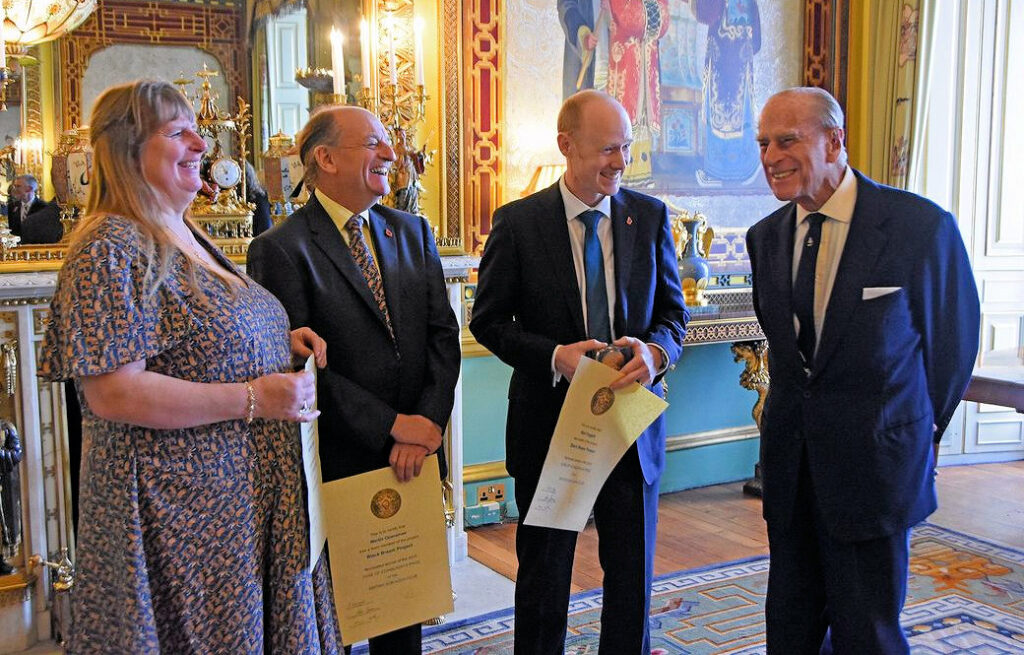
Sheilah and Martin Oppenshaw and Matt Doggett collect awards from the late Duke of Edinburgh
Such an interesting story to tell
Matt added:
“One new thing I did last year was to make 3D models of the nesting areas using photogrammetry, swimming back and forth over the nesting grounds in a grid, taking hundreds of photos and using computer software to build up a 3D model, another lovely way for people to explore the nesting grounds online.
“It is such an interesting story to tell, of the courtship process and the conditions that the males have to put up with, building the nests and guarding the eggs. It caught people’s imaginations and had very positive feedback.
“We still put cameras down every year as we are always finding out new things and seeing new behaviours. We have never actually yet caught the act of spawning on camera, that’s quite tricky, and would be nice to achieve.”
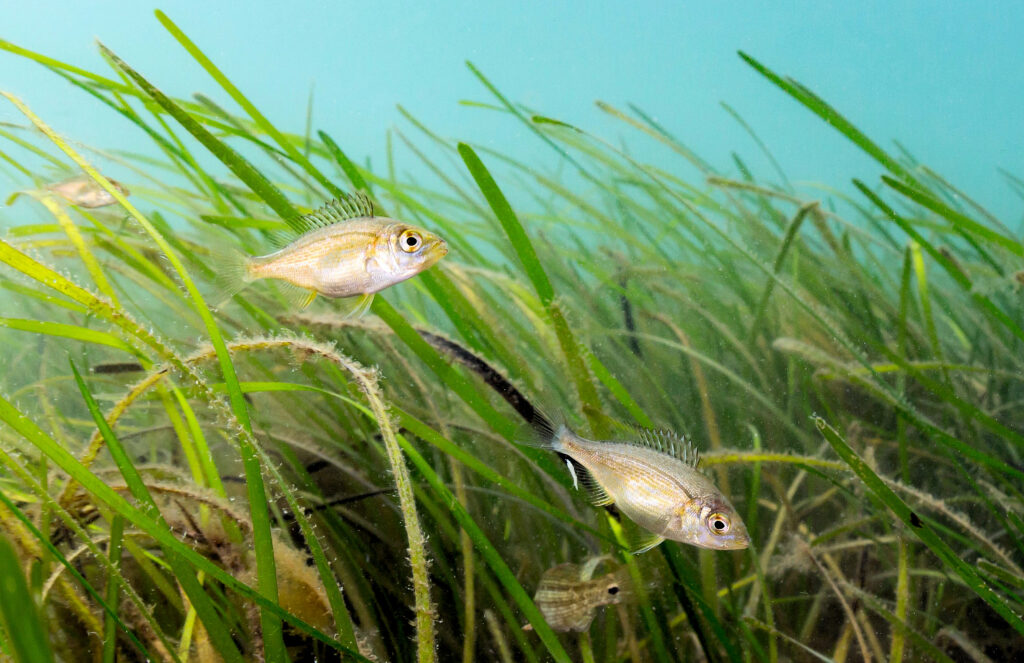
Juvenile bream appear in the seagrass meadows in Studland Bay in late August
Further information
- Read more about the amazing lives of the black bream at Matt Doggett’s website
